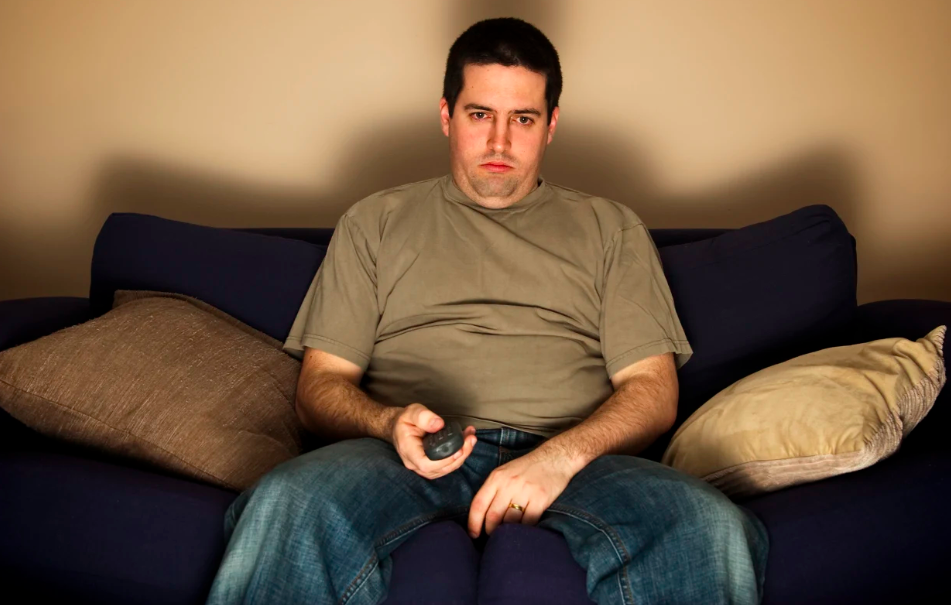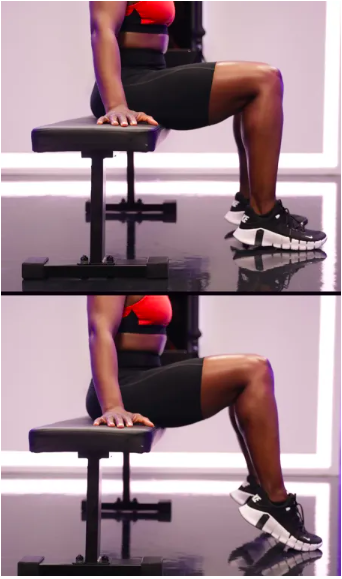How To Burn Fat If You Are Out Of Shape? Burn Fat With This One Simple Movement!


Introduction
The articles explore leveraging micro-movements, for weight loss and metabolic health. Jittery individuals, like those with ADHD, naturally burn more calories, aiding in staying thin. Incorporating simple movement to enhances metabolism and glucose regulation, making it beneficial for both the metabolically healthy and those seeking fitness, despite its low energy expenditure.

Burn Fat While Siting With This One Simple Movement
We all have certain advantages and disadvantages. Figity people, such as those with ADHD, may be perceived as less stable. However, this extra energy comes with a specific advantage – it benefits them in staying thin.
You may not possess this advantage concerning your health. Nonetheless, we can adopt some of these habits into our lifestyle to gain some benefits.
There is one muscle that, considering the effort you put in, will burn half as many calories as walking does. So, if you are starting to walk for 30 minutes a day but would prefer watching TV instead, you can perform a simple movement while sitting for an hour and achieve similar results to walking for 30 minutes.

Adopt This ADHD Habit To Lose Weight
ndividuals with ADHD are typically high-energy and have a biological need to expend this extra energy. According to an article by The New York Times, these individuals burn an additional 350 calories per day, leading to a weight loss of 30-40 pounds per year.
On the contrary, the same article reveals that overweight people tend to seek ways to conserve energy, often sitting more and relaxing. However, there is a muscle that can be maximized while sitting through a micro-exercise.
While someone with ADHD may display jittery movements, like moving their hands, fingers, or bouncing their leg, you can achieve similar results with just one muscle. This muscle is designed to be used constantly, making it challenging to get tired, even for those who are out of shape. Many people engage in this activity while sitting and watching TV or even while at their desk at work.
There is a study titled “A potent physiological method to magnify and sustain soleus oxidative metabolism improves glucose and lipid regulation.”
Source: https://www.cell.com/iscience/fulltext/S2589-0042(22)01141-5?_returnURL=https://linkinghub.elsevier.com/retrieve/pii/S2589004222011415%3Fshowall%3Dtrue
This exercise is known as the soleus push-up or “calf raises,” as mentioned in the study. It was found to enhance metabolic health even while sitting, improving the body’s ability to convert fat into energy.

How To Turn Fat Into Energy
Keep in mind that fat is a highly efficient energy source. When you exercise during the right stage of digestion, you burn fat, not just the food you recently ate. Pairing this with soleus push-ups helps your body convert fat into energy.
According to the study, blood sugar dropped by 52% after a meal with the incorporation of soleus push-ups. Even two hours after eating, there was a significant improvement.
Maintaining healthy blood sugar levels is crucial for everyone, whether diabetic or not. It plays a vital role in our metabolic health. As mentioned in other articles, only about 12% of the US population is metabolically healthy. Being metabolically healthy was a significant factor in how individuals fared during the COVID pandemic. If you were not metabolically healthy, you might not have done well.
If you’re out of shape, this exercise is an excellent way to reintroduce activity into your lifestyle. It doesn’t replace your current workout routine if you’re already walking or exercising regularly. Instead, it supplements high-intensity workouts with micro-exercises.
Despite the relatively low energy expenditure of the soleus push-up, using a muscle that makes up only 1% of your total body mass and burns half as many calories per minute as walking, researchers were impressed by its ability to boost metabolism and improve glucose regulation.

What Is Soleus Push-Up
Your calf comprises two major muscles: the soleus and the gastrocnemius, with the soleus being the smaller one. Jenna Moore, a certified strength and conditioning coach and Programming Specialist at Tonal, explains that the gastrocnemius, primarily made up of fast-twitch muscle fibers, aids in explosive movements like sprinting, jumping, and plyometrics. On the other hand, the soleus is composed of fatigue-resistant, slow-twitch muscle fibers that support standing, walking, and running for extended periods.

While standing calf raises target the gastrocnemius, seated calf raises, or soleus pushups, are more effective at isolating the soleus.
Here’s how to do a soleus pushup: Sit in a chair with your knees bent and your feet flat on the floor. Push your toes into the ground as you raise your heels. Lower your heels and repeat.

Conclusion
The diet and fitness industry has been misleading you for too long. While they emphasize diet, exercise, and weight loss supplements, much of their advice can actually undermine your success. For instance, studies show restricting certain foods to lose weight may lead to overeating by 133%.
Imagine a world where you can eat what you want, stay satisfied, and still witness those scale numbers drop. Seems too good to be true, doesn’t it? Well, it’s not. Visit http://eatwhatyouwanttoloseweight.com, and I’ll provide the evidence to help you break free from the diet and fitness industry’s mind games.










